The Glasheen River was dredged to prevent flooding. It flooded anyway.
Cork City Council spent weeks dredging a section of The Glasheen River to prevent flooding. The manner in which it was done was controversial. What comes next?
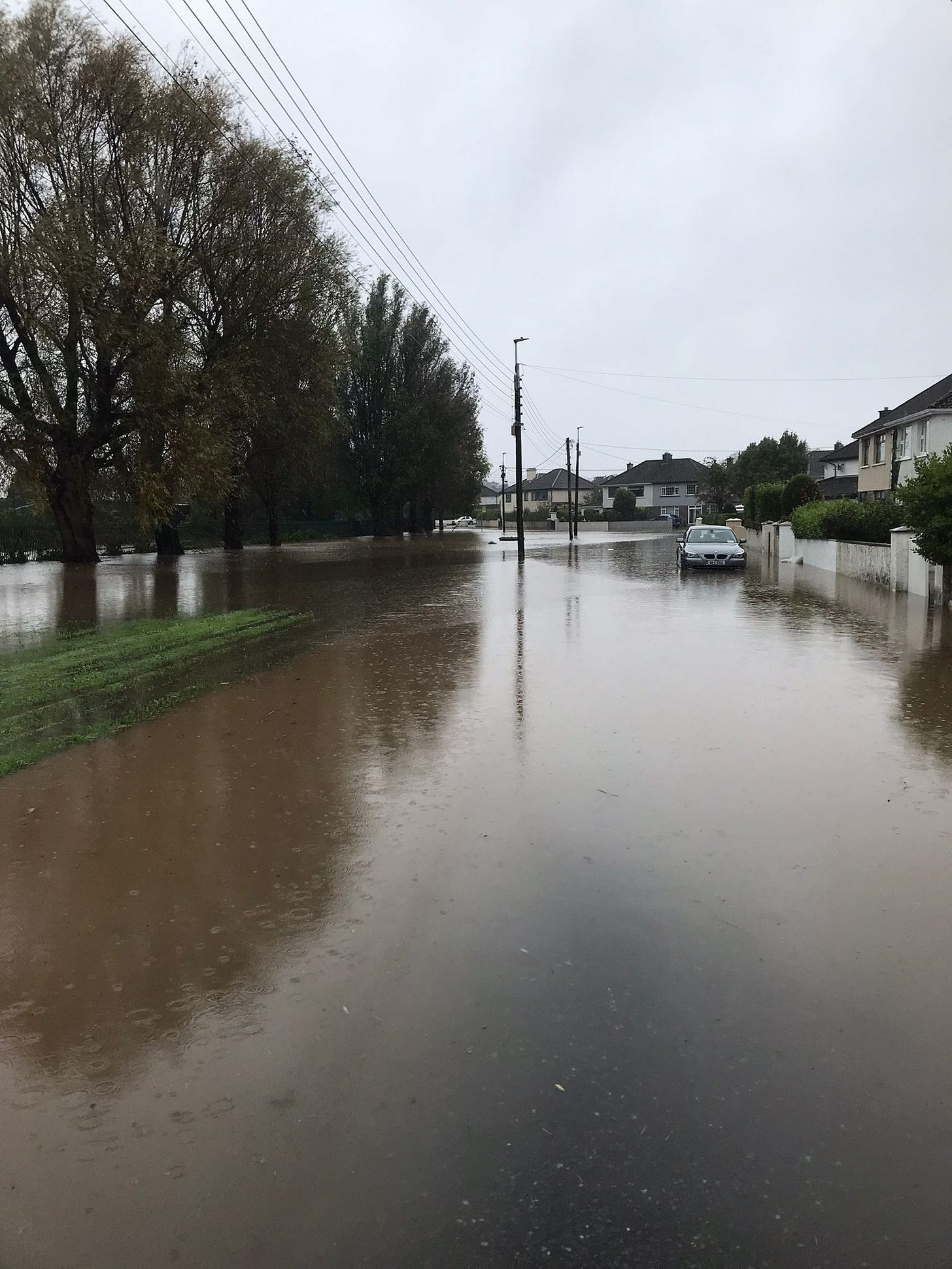
Between September 18 and October 5, Cork City Council carried out "emergency flood prevention works" on the Glasheen River in Togher as it flows in a straight line along the western edge of Clashduv Park and parallel to Riverview Estate.
From the banks of the river, diggers hauled load after load of silt, debris, and trash from the river. Workers also cleared vegetation on the river banks.
The City Council told Tripe + Drisheen that it has a responsibility to maintain certain rivers and streams within its administrative area to prevent flooding, and the work was carried out "in response to concerns expressed about the river's condition and its potential to flood, damaging nearby properties."
Given the volume of rain that has fallen in Cork in the past 48 hours as Storm Babet swept through the southwest, it's likely that the clearing of the Glasheen River prevented even worse flooding. However, when Tripe + Drisheen visited the river on Wednesday, October 18, sections of the road along Riverview Estate were underwater. Floodwater was right up against houses, some thirty meters from the Glasheen River.
Where the river had burst its banks, it was impossible to see where the main channel was. City Council crews were on-site, going house to house. Some households had sandbags up against the front doors.
While the immediate concern is to alleviate the flood damage and provide assistance to those on the floodplain, the manner in which the clearing of the Glasheen, along with the vegetation that was destroyed, has caused concern.
Maria Young of Green Spaces for Health had more questions than answers following the clearance work. Maria is part of the Togher Community Garden, which, together with the City Council and the local community, has built a thriving garden in the northwest corner of Clashduv Park, close to the Glasheen River.
At the top of her list was why the silt and sludge removed from the river were left on the banks. As she pointed out when I visited earlier this month, would it not simply be washed back into the river when heavy rain occurred again? Or, washed into the surrounding neighborhood in the case of severe flooding?
Maria also wanted to know if the sludge was toxic and if it would be tested. But most of all, she wanted to know what the future of The Glasheen River, which has been confined for decades as it passes through this stretch of Togher, holds.
Is it forever going to be designated as a drain, or can the City Council prevent flooding and, with the assistance of the local community, bring the "murmur" back to the river, as Young said
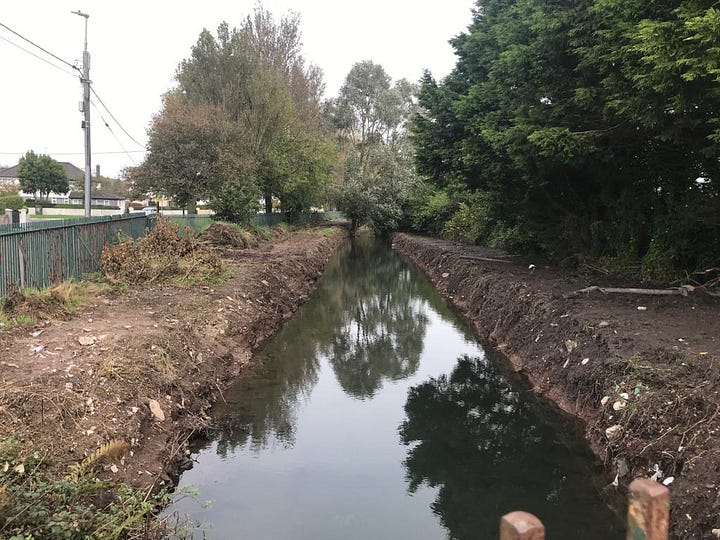
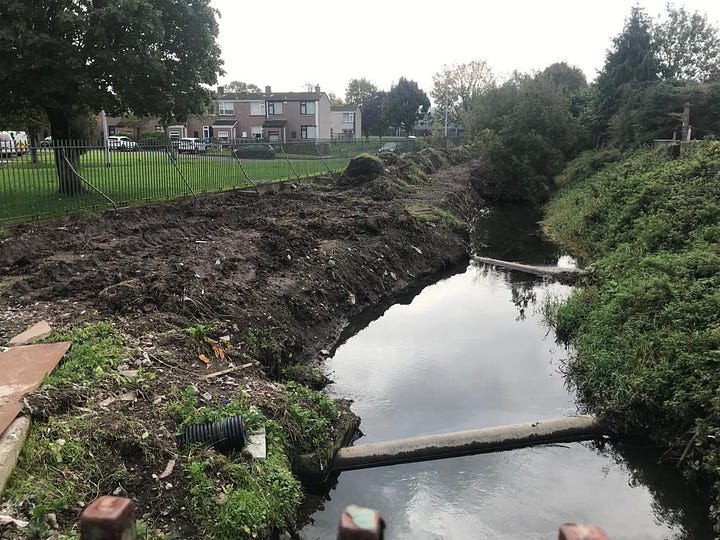
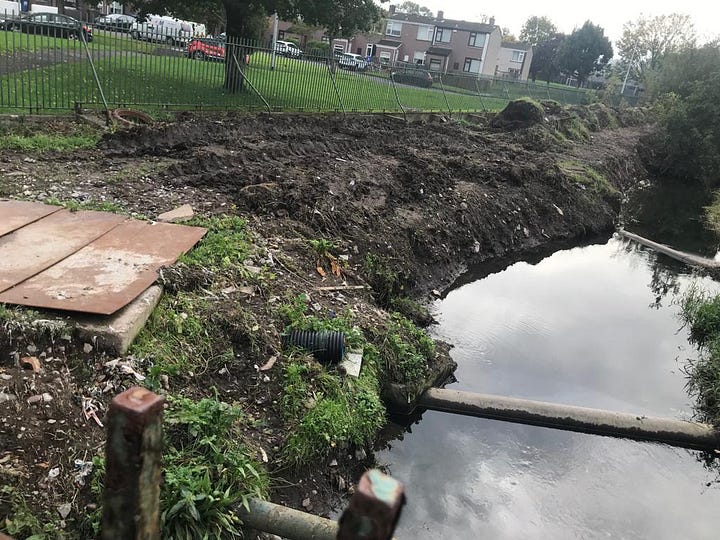
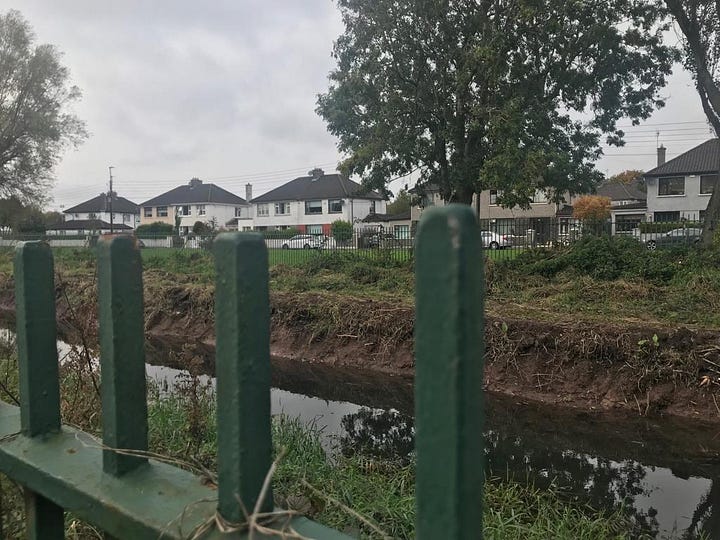
A band-aid solution?
As soon as Maria received word of the drainage works, she did what occupies much of her time: trying to find answers to her questions and build solutions. She contacted various parties, from local councillors to Cork City Council, the Environmental Protection Agency (EPA), the Local Authority Waters Programme (Lawpro), the biodiversity officer, scientists, and independent ecologists.
On a Saturday in early October, when I visited the community garden, Maria oscillated between her usual upbeat demeanour as she served tea and cake, and a sense of bewilderment. Just yards away from us was a river that had been drained of life and was essentially isolated from the community.
She urged me to go and see what had been done.
From Clashduv Park, you would hardly know the Glasheen River existed. From the park's side, trees obscure one bank, and access is further restricted by railings. Much of the river is culverted from its source near the Viaduct to where it joins the River Lee in the city.
Maria has visited the source, where it bubbles up into life, she explained.
By the time it reaches Togher, it's almost lifeless. It's an industrial channel designed for efficient water conveyance. Nature is an afterthought.
Glasheen takes its name from the river, but Maria says that once fences were erected following the tragic drowning of a local child, it changed the relationship of the local community with the river. It became a dumping ground, she says, and "people became river blind."
The Glasheen "once had brown trout, eels, otters, a place for bathing, a mill, even wicker making. We know bats are using the corridor," Maria said.
Nature will find a way; it always does, and vegetation grows where it can along the riverbanks. However, when the diggers moved in this past month, they scraped away everything. The riverbanks were barren.
Areas of contest
Tripe + Drisheen sent a series of questions to the City Council regarding the removal work and the subsequent steps in light of concerns about the silt and sludge that had been removed, including whether it was toxic and if it would be subjected to testing.
In response, the Council emphasised its responsibility to ensure that the rivers, channels, and drains under its management remain unobstructed, particularly when heavy rainfall is anticipated.
“The works involved the clearing and removal of debris and vegetation that may give rise to blockages. The conveyance of the river had significantly reduced due to the buildup of silt in the channel. The silt was removed, placed on and spread over the riverbank.
It is important to note the context in which the photographs were taken as they represent works in progress. Following spreading of the material any debris or rubbish was removed from same. Where riverbanks are flat, material is spread over the bank to minimise the removal and disposal of material from site.”
However, Maria contests this. As she highlighted, some debris was evidently still trapped within the silt, a fact I also observed during my visit. This is not to say that larger items, like shopping trolleys, were not removed.
A more significant concern for Maria is that the material taken from the river and left on the river banks is loose, with no vegetative material to anchor it in place. As she pointed out, if the river were to burst its banks, wouldn't this loose material simply flow back into the river
The City Council continued:
Cork City Council understands the concerns raised over the works, particularly as the clearing of such overgrowth and vegetation can look startling. However, concerns were also raised and expressed by many individuals and interest groups stating that the river was stagnant, not being maintained and representing a flood risk. The Glasheen River has a number of culverts and trash screens which are liable to block from debris and vegetation.
The works, which were carried out on an emergency basis, followed representations from residents and locals who were concerned over the risk of flooding, particularly with the recent extreme rainfall events and the very significant flooding in the estate experienced during Storm Betty on 18 August, 2023. It should be noted that the river levels were also extremely high during Storm Agnes on 27 September but did not overtop the riverbank, due to the emergency works carried out. Residents have remarked that the emergency works carried out by Cork City Council prevented another flooding scenario during Storm Agnes and protected their properties from possible damage.
As Maria pointed out, the last thing she wants to see is any households flooded. However, as she noted, "there is no response to the probable pollution, toxins in the silt, and their testing or removal from the site," from the City Council.
Given the flooding that has taken place, the question of whether the silt and sludge were toxic becomes even more concerning.
Maria said that, from her conversations with specialists, it's inevitable that pollutants will leach back into the river.
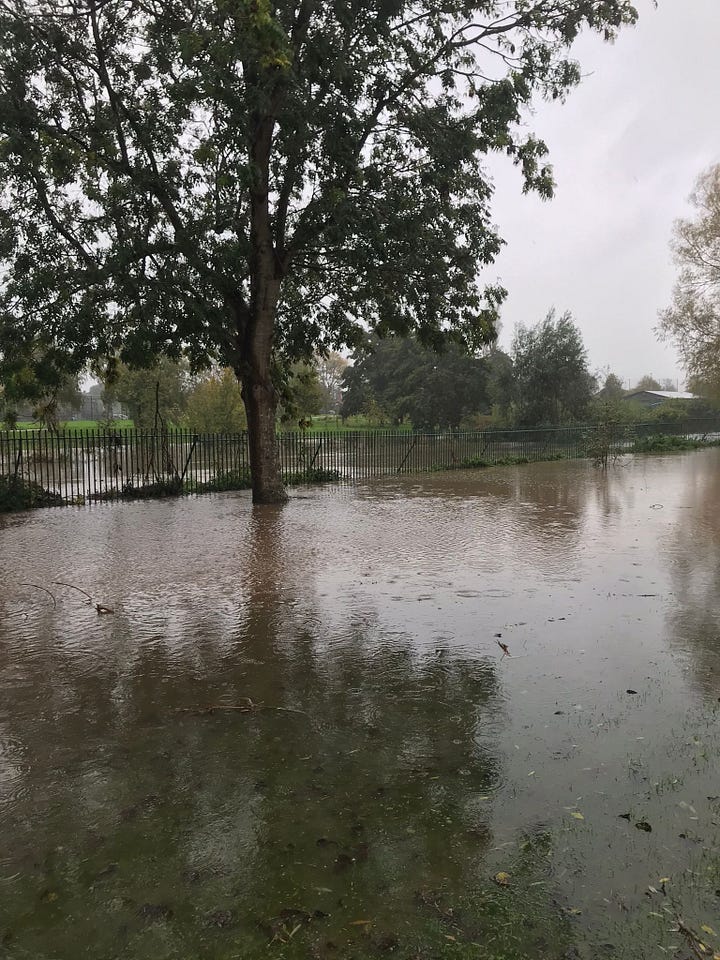
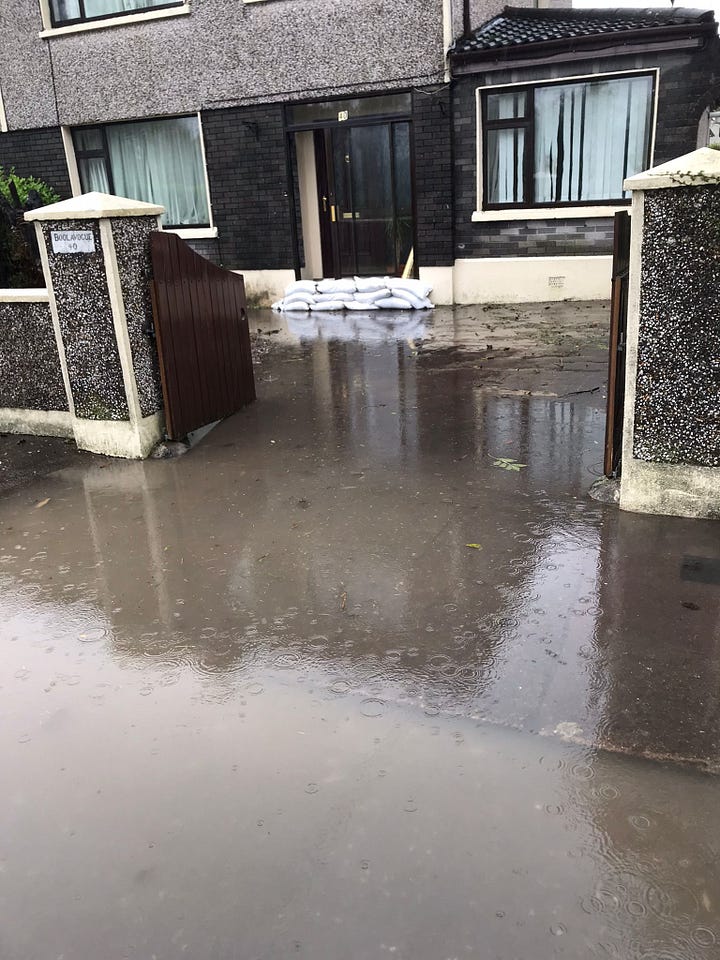
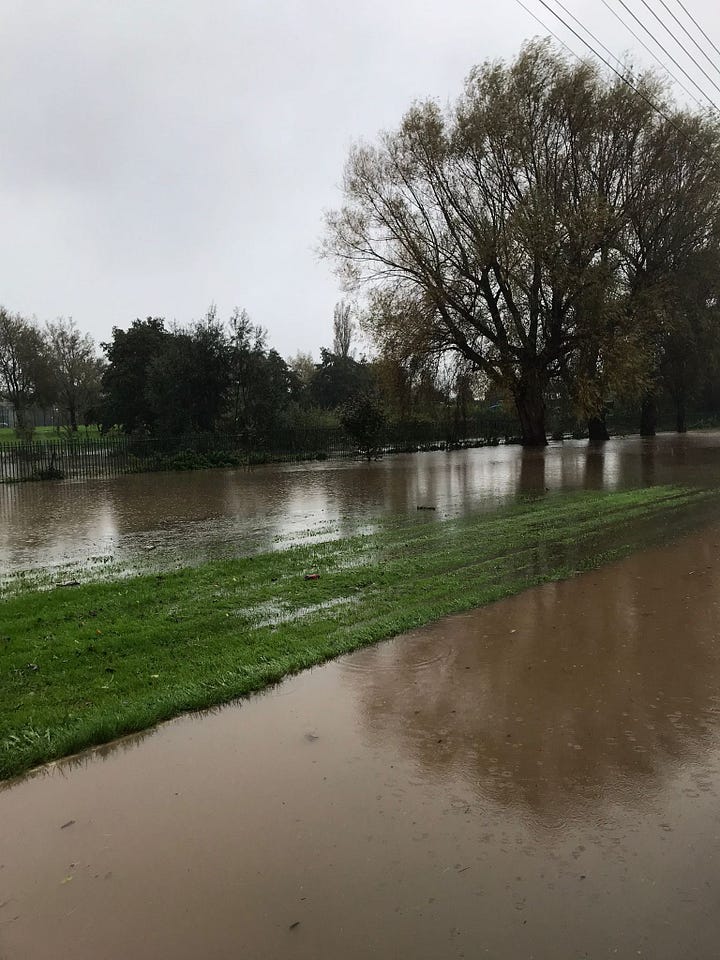
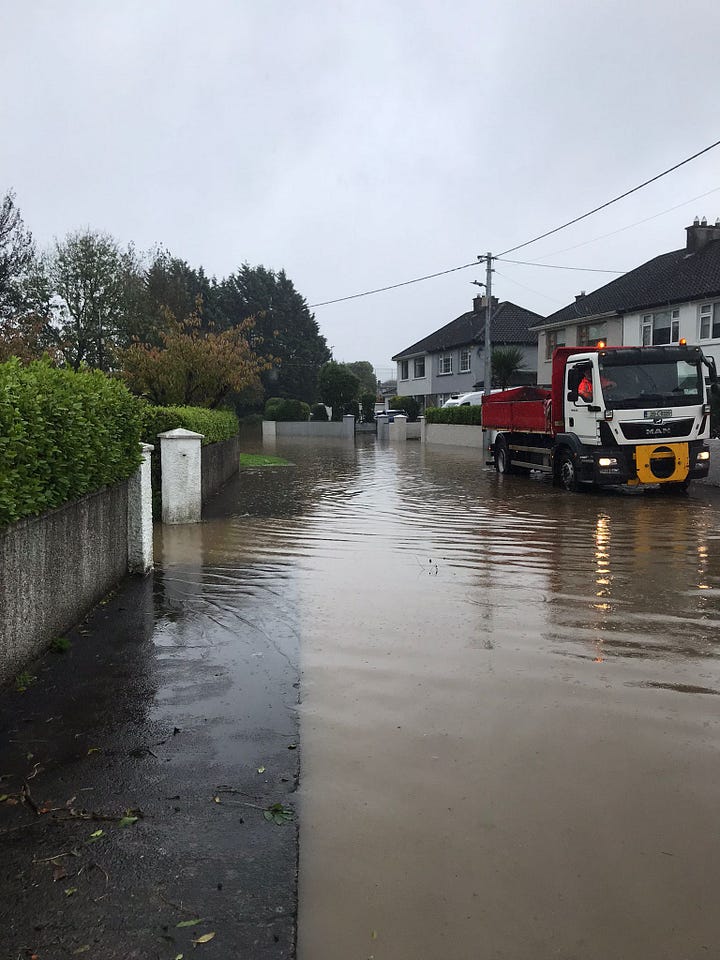
Above all, though, Maria wants to move away from the mindset that the Glasheen River is an engineering problem to be fixed by repeated silt, sludge, and vegetation removal.
She said that what we should be looking for is "a holistic approach to maintaining the river."
"We want to restore the river to a position where it is clean, where the ecology of the river is protected, and where the river isn't simply regarded as a drain. We see Sustainable Drainage Systems (SuDS) solutions; for example, there is a grass area between the river and River Bank Estate that could, with engineering, act as an area for absorbing any overflow.
Bernie Connolly of Cork Environmental Forum echoed Maria’s point when she told me that “fundamentally we are not managing waterbodies including rivers through a whole catchment approach.”
“I think a lot of good work is beginning with groups such as those working on the Tramore River. Some issues are complex with lots of historical issues such as culverting, pollution going in. Waterbodies in cities previously treated as drains rather than life sources. We need much more integrated cross sectoral collaborations to be stewards of our rivers and streams,” Bernie added.

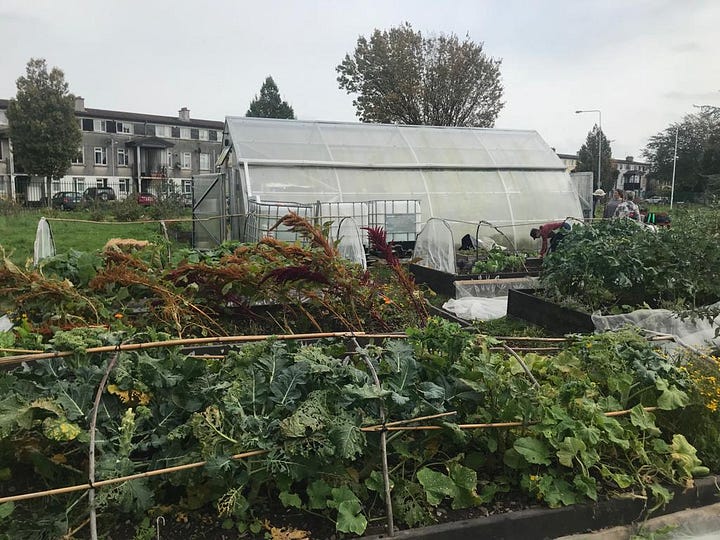
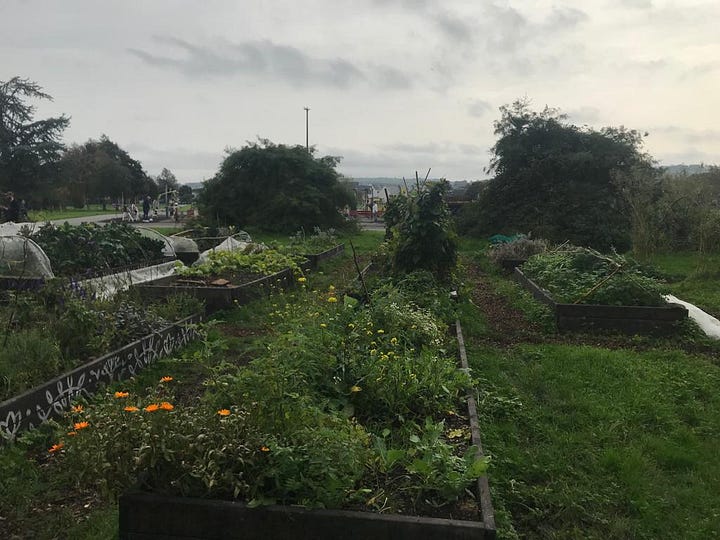
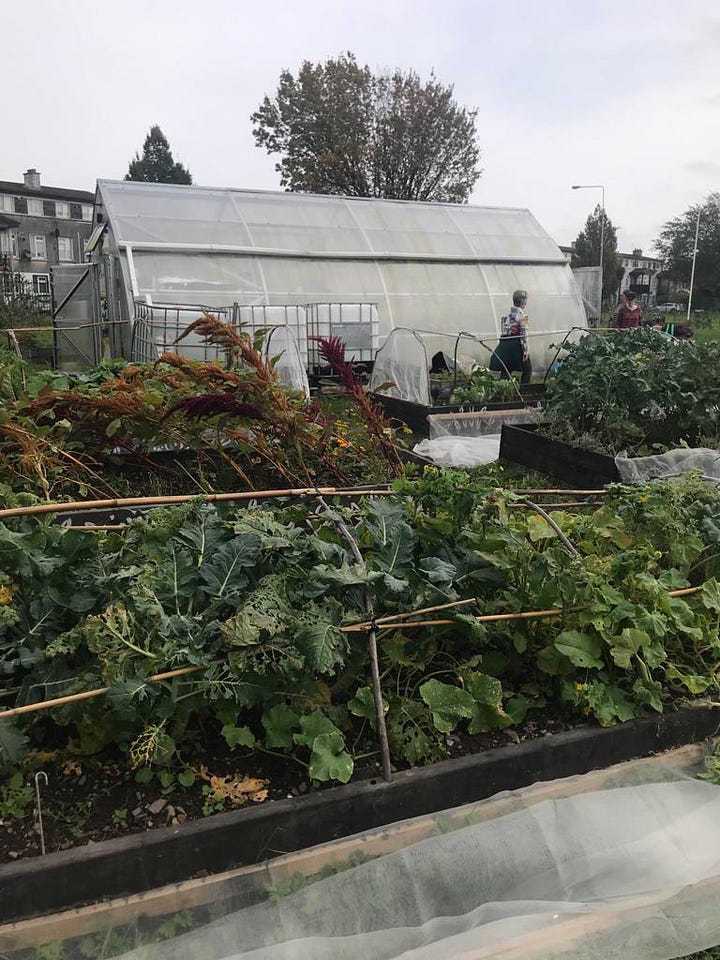
What a solution might look like?
One potential solution that Maria outlined came via Simon Harrison, a lecturer at the School of Biological, Earth and Environmental Sciences in UCC, which would involve creating a channel in the existing riverbed.
As Maria explained, this channel could mimic the natural contours of the original Glasheen River, while the wider riverbed would remain in place to accommodate and manage any overflow during periods of heavy precipitation. Similar works were carried out previously in Douglas.
“This involves engineers, ecologists, residents, and the City Council all working together to find a climate change response for this river and put in place and implement a plan that is fit for the future that protects residents and nature,” Maria said.
For now, the primary concern is the residents along the Glasheen River who have endured flood damage. Given the stark reality of the climate crisis, there is the likelihood of more flooding in the future.
“If we continue to do what was done in Togher to all our rivers because of the effects of climate change our river systems and all that live on them are doomed,” Maria said.
Tripe + Drisheen is a quality ad-free newspaper for Cork city and county - delivered by email. We are reader-supported and invested in local journalism. Get in touch with us tripeanddrisheen@substack.com
8 new train stations are planned for Cork but will they be on track by 2030?
It will be 15 years next year since a train station was opened in Cork, and even then, when Midleton train station came back online in 2009, that was the result of opening a shuttered station. However, Iarnród Éireann/Irish Rail has plans to open eight train stations that would serve the commuter belt running from Cobh and Midleton in the east of the cou…






Great article, plenty of information and raising awareness of new river management ideas which will be more and more important
What a solution must look like?
EVACUATE!
The unwillingness to follow science is manifested in sentences like "We want to restore the river to a position where it is clean, where the ecology of the river is protected, and where the river isn't simply regarded as a drain. We see Sustainable Drainage Systems (SuDS) solutions; for example, there is a grass area between the river and River Bank Estate that could, with engineering, act as an area for absorbing any overflow." and " “... fundamentally we are not managing waterbodies including rivers through a whole catchment approach.”
THIS IS BAND AID.
Following science means evacuation since all rivers and coastlines will restore themself into nature without the need of further climate destruction with Diesel diggers and concrete bank stabilization,fossil fuel based foot paths, cycle lanes,lawn management .... .
Destroying the climate with nature management is absurd,fills the pockets of blahblahers and makes everything worse.
Follow science.
The article is followed by another one: " 8 new train stations are planned ...."
In flood zones these new train stations are planned as were the old ones:
https://www.independent.ie/videos/flooding-on-cork-rail-line/a1173307656.html
Europe is expecting a sea level rise of 60 meter of which 2 - 3 m will be achieved by the end of the century.The intensity of precipitation and wind forces increases with rising temperatures.
Adapting and mitigating means evacuation and leaving the fossil fuels in the ground:no more diggers,no more concrete.